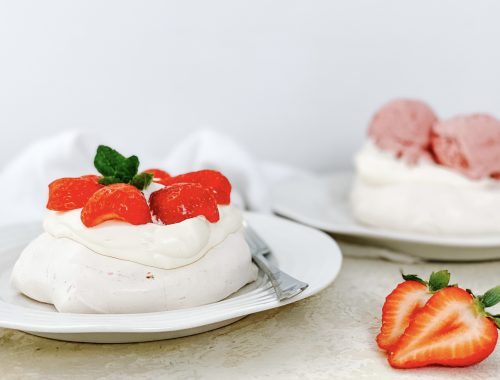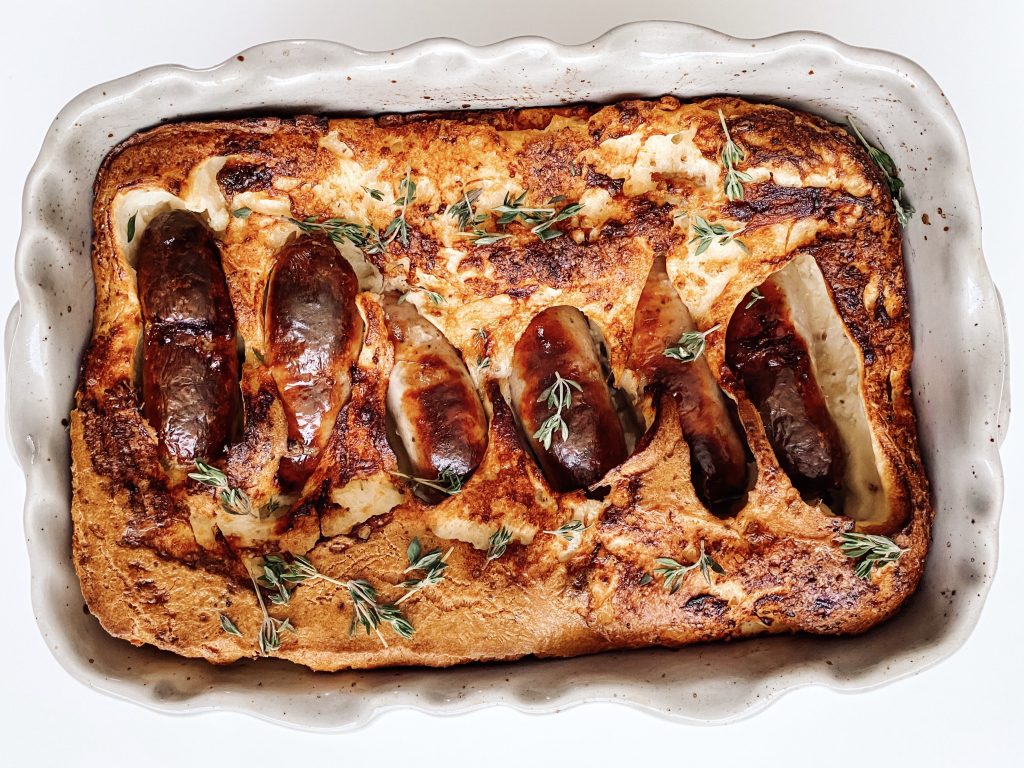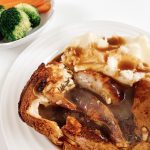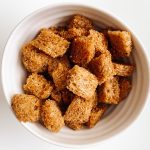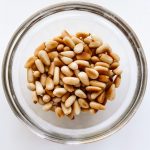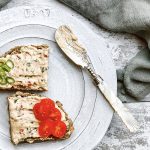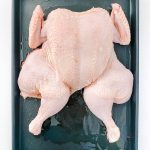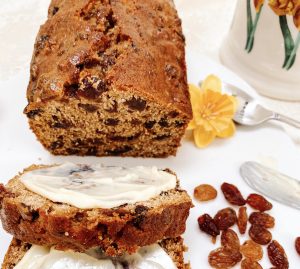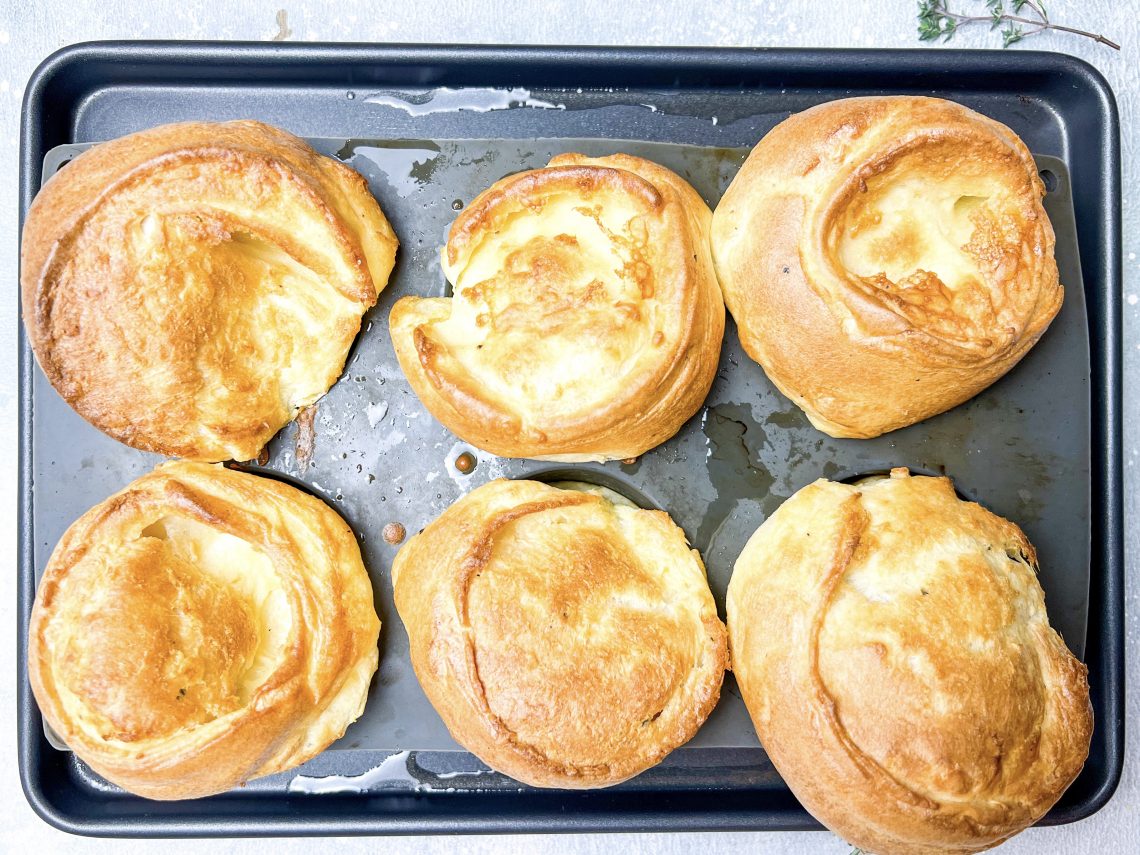
Yorkshire Pudding
Yorkshire Pudding, sometimes shortened simply to ‘Yorkshires’ are a quintessential British side dish, hailing, unsurprisingly from Yorkshire, in northern England. Hugely popular throughout the UK, it is made from cooking a simple batter of eggs, flour, butter and milk in a very hot oven until it is puffed up, crispy on the outside yet wonderfully soft in the centre.
Yorkshires can be cooked in varying sizes and used in different ways. The two most classic uses, however, are as an accompaniment to a roast dinner, specifically roast beef, or in that other classic British dish, Toad in the Hole (See recipe here). Critical for me is that they are served with lashings of delicious gravy, either Onion Gravy or one made from the juices from the roast dinner.
Yorkshires with Roast Turkey at Christmas?
Whether Yorkshires should be served with your Christmas Turkey or Goose or not is an annual, hotly debated topic across households and the press! Neither my husband nor I grew up having Yorkshires as part of our Christmas meal and we have therefore continued in that way. HOWEVER, as a huge fan of Yorkshires, I think they would be a wonderful accompaniment at Christmas, smothered in all that delicious turkey gravy. The biggest problem is how to fit them in the oven with the myriad of other sides being cooked!
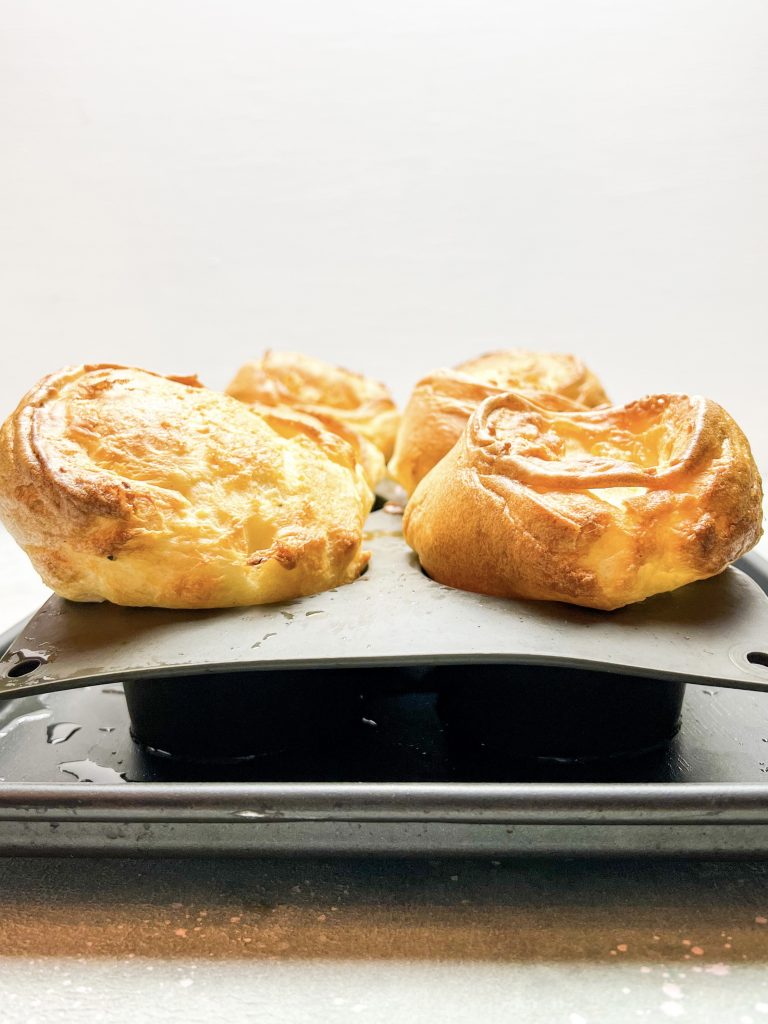
Yorkshires on a Grazing Platter??
Yorkshires on a Grazing Platter?? Is she mad, I hear you ask! I kid you not, Yorkshires are seriously delicious served on this Fish Grazing Platter. They go particularly well with hot smoked salmon, (served hot!) and the Smoked Mackerel Pâté but would also work with Smoked Salmon Dip with Horseradish, Lemon and Dill or your fish pâté of choice.
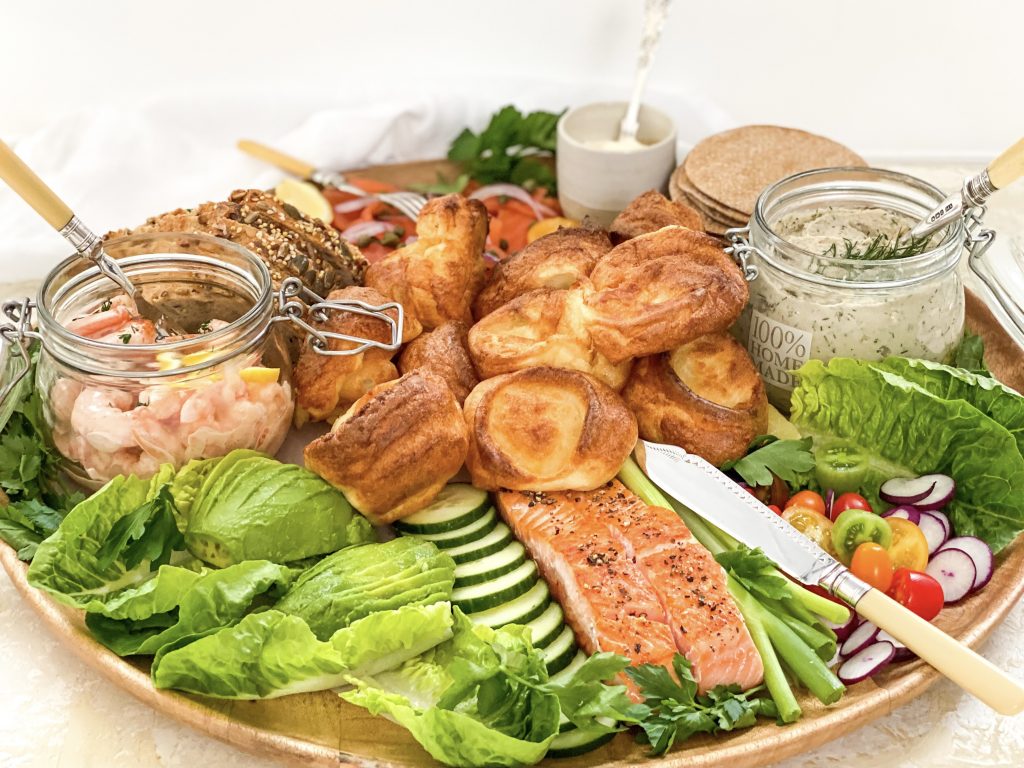
The contrast in textures between the hot crispy, soft Yorkshires and the creamy pâté and smoky salmon is an utter delight. Adding some hot food to your grazing platter over New Year, when the weather is cold and miserable, is surely a wonderful idea? The Yorkshires are best served and eaten as soon as they come out of the oven – trust me, they will disappear extremely quickly!
I cannot claim this idea as my own. This is from the genius, who is Jamie Oliver! See here for his Creamy Smoked Trout and Horseradish Pâté with Yorkshire Pudding recipe.
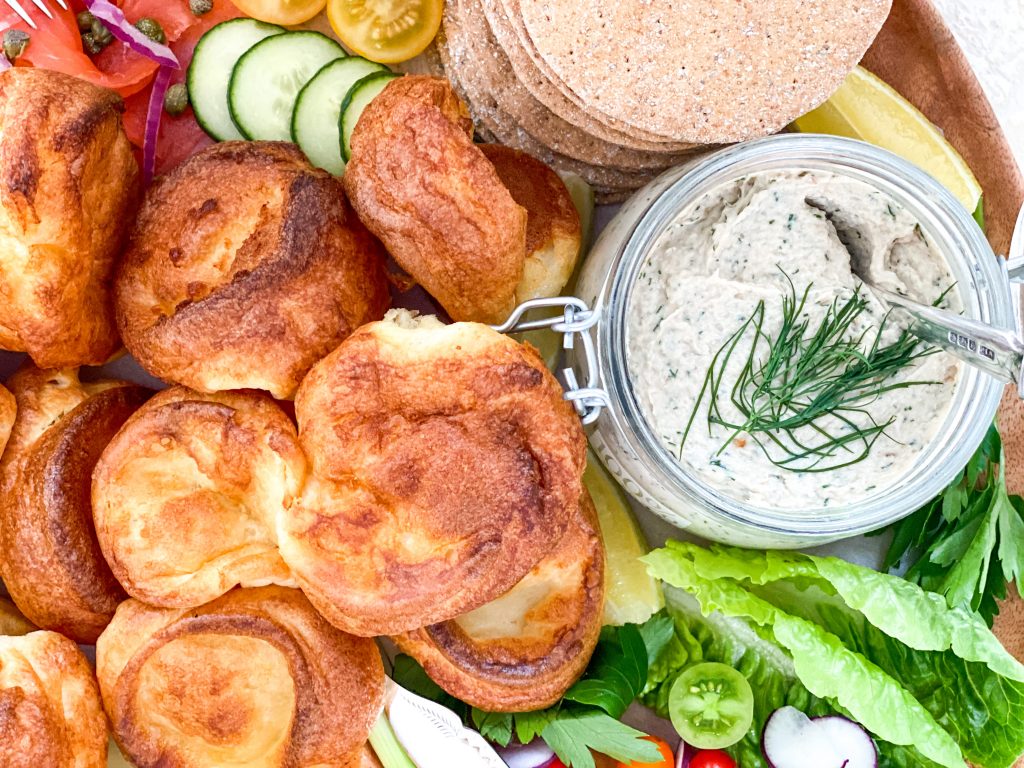
How to make Yorkshire Puddings:
Collect all your ingredients together:
To cook –
- melted goose fat, duck fat, lard, dripping or oil such as vegetable or sunflower oil or you can use olive oil
For the batter –
- plain/all-purpose flour
- fine salt
- freshly ground black pepper
- eggs
- unsalted butter, melted or vegetable oil
- water
- milk – I use semi-skimmed
Tins –
- you can make individual Yorkshires in deep muffin tins, ( I use my silicone muffin tray but metal tins work really well too, OR
- you can make a large one in a baking dish or cast iron pan. You can use:
- an oblong tin roughly 20cms/8in x 26cms/10¼in,
- a square tin 23cms/9in x 23cms/9in, or
- a round tin 25cms/10in in diameter.
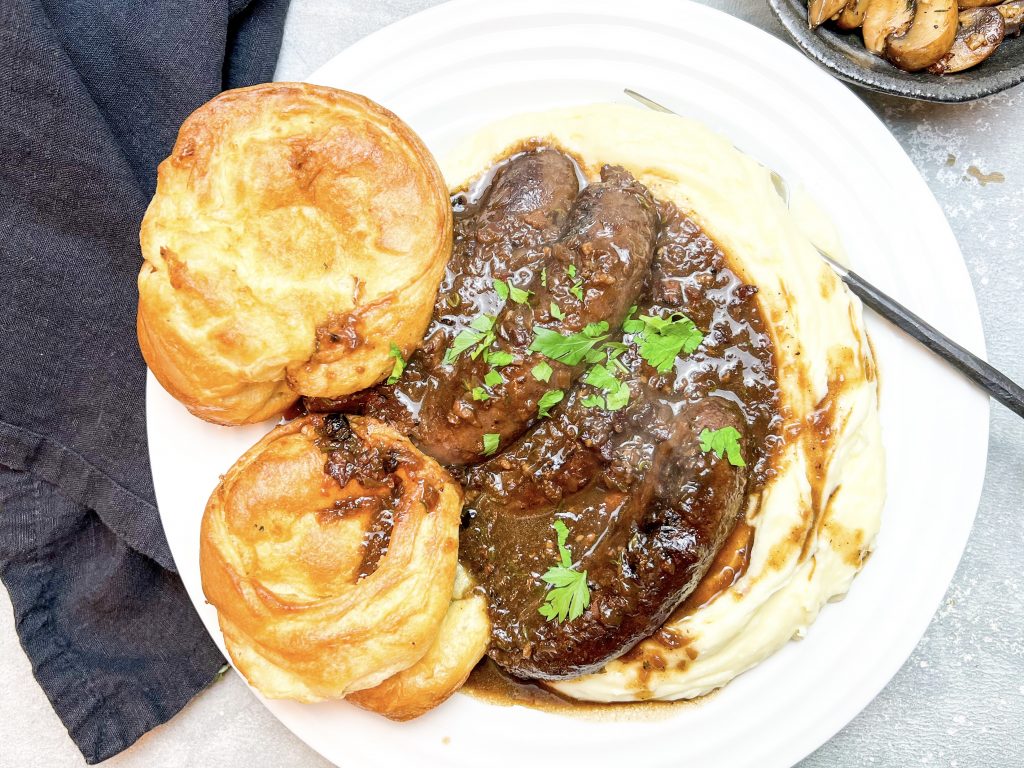
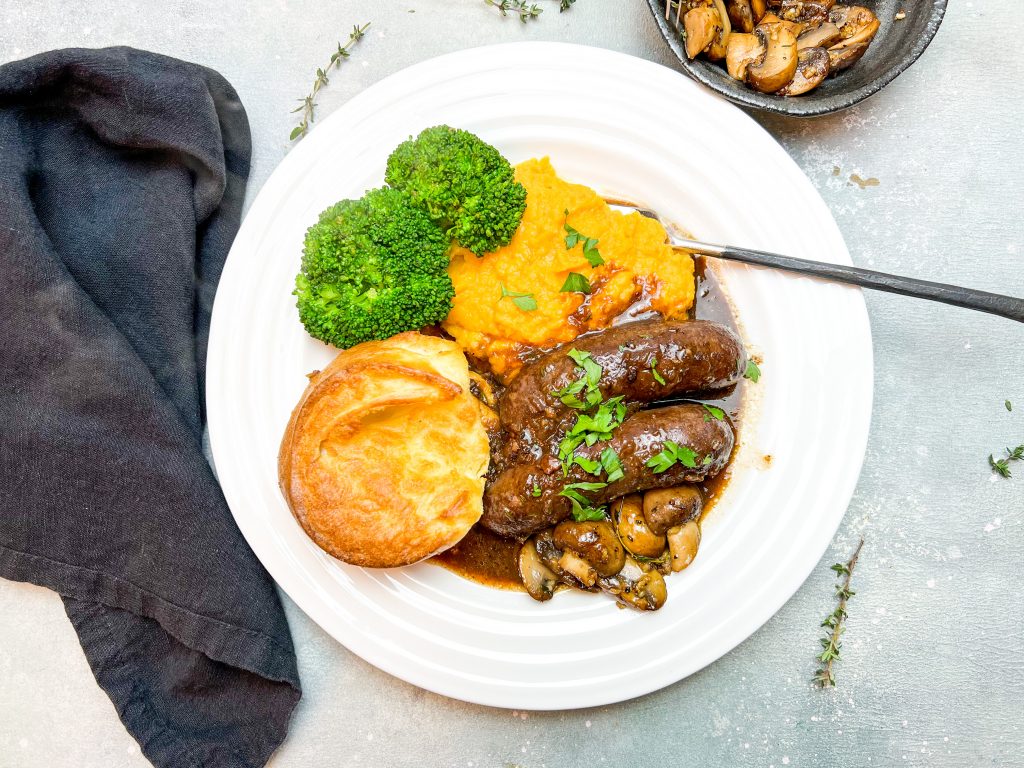
Yorkshire Pudding with Venison Sausage Casserole
Now whip them up!
- First turn the oven on high to heat up
- Next, prepare the tin/s. Add 1½ teaspoons of your chosen fat to each muffin tin hole or the whole quantity to your baking dish. Use a pastry brush to ensure the base and sides of the tin are covered in the fat/oil.
- Put the dish into the pre-heated oven to heat up for at least 5 minutes.
- Add the flour, salt, pepper, eggs, melted butter and water to a bowl or jug and beat with an electric or a balloon whisk until mixed.
- Scrape down the sides of the bowl, add the milk and beat on a slow speed until thoroughly incorporated. It should the consistency of double/heavy cream.
- Pour the batter equally into the hot oil – I make one large or six large individual Yorkshires but you may prefer to make 8 slightly smaller individual ones.
- Place in the centre of a very hot oven and bake for 20 – 25 minutes for the individual ones or 30 – 40 minutes for a larger Yorkshire.
- They are cooked when the batter has puffed up, the outside is crispy and the inside is soft.
- Serve immediately – they will deflate quickly so get them on the table as soon as possible.
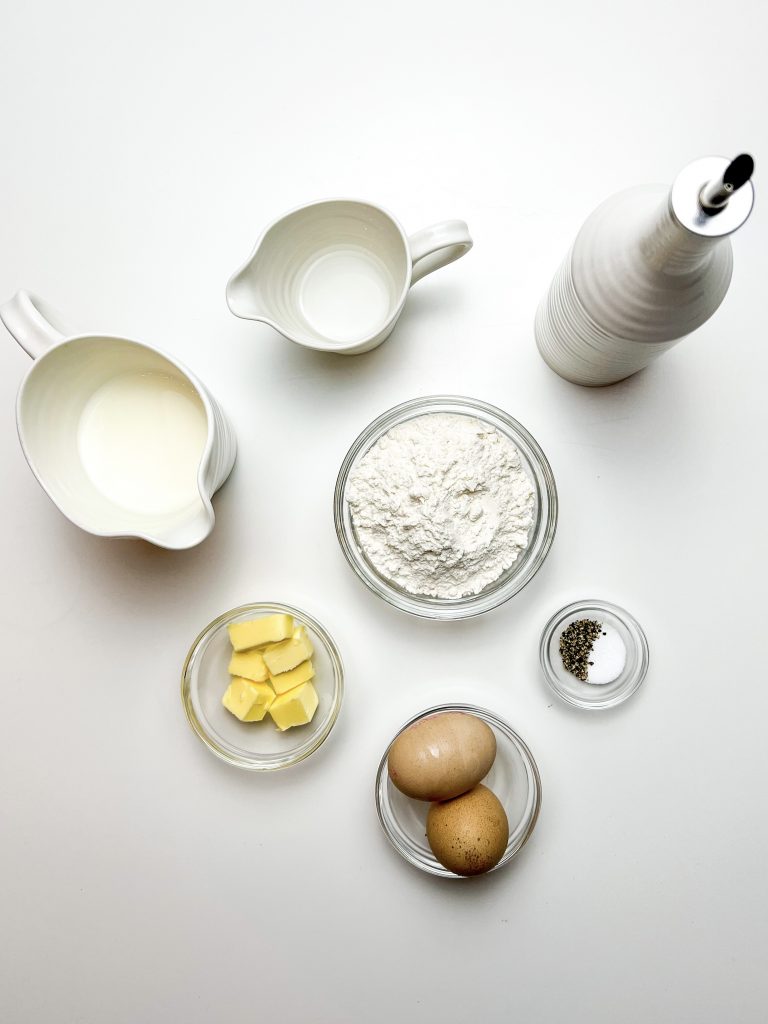
Ingredients 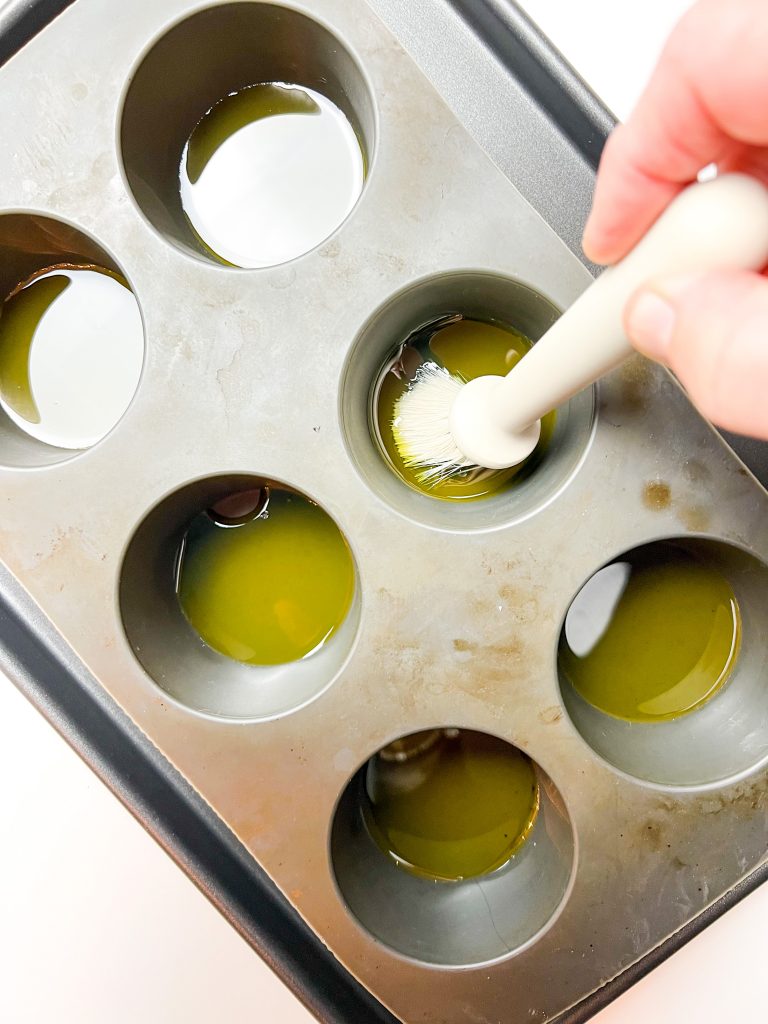
1,2,3 Heat oven, oil dish and place in oven 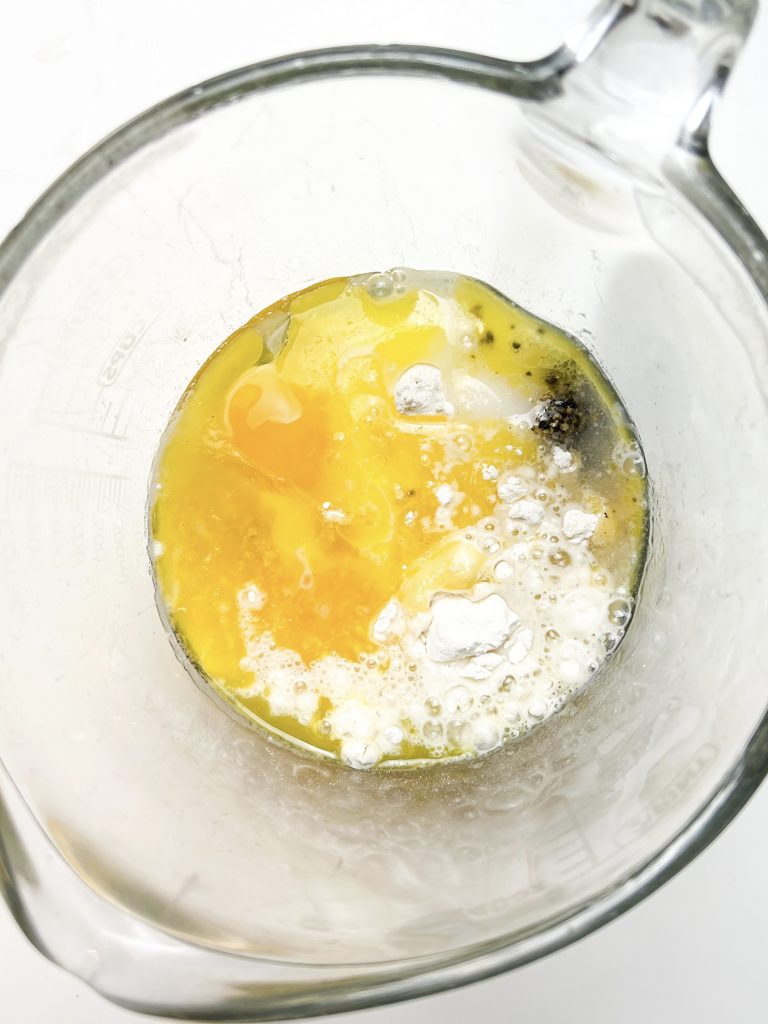
4 Flour, s&p, eggs, butter, water to bowl … 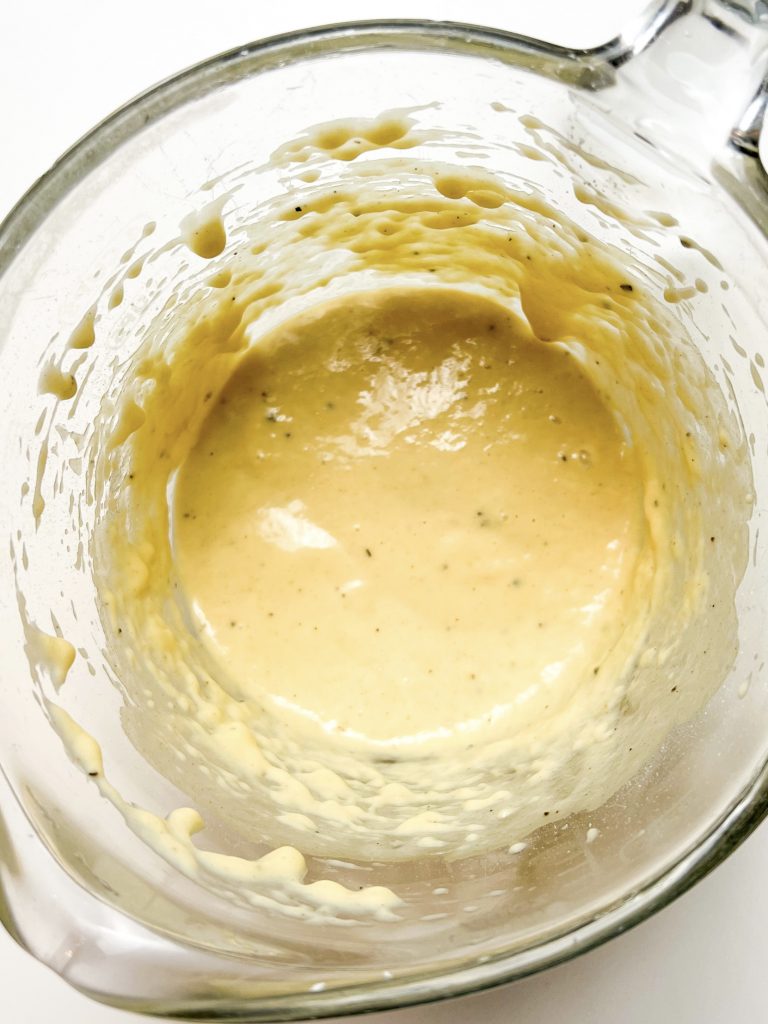
… whisk well 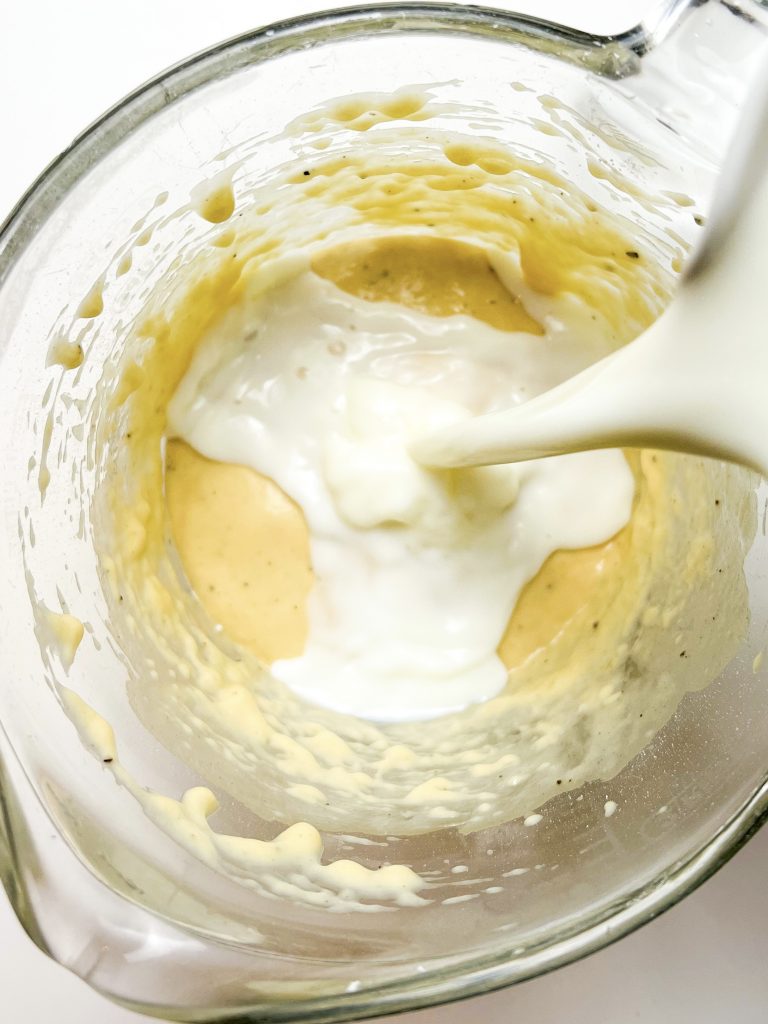
5 Add milk and … 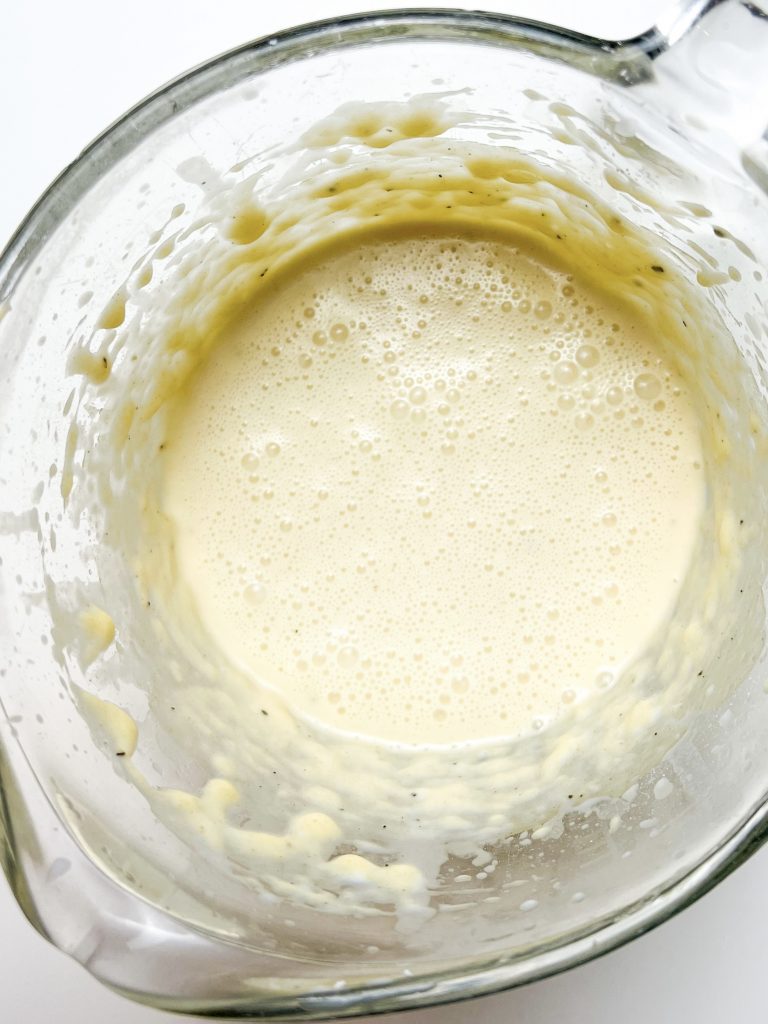
… beat to mix 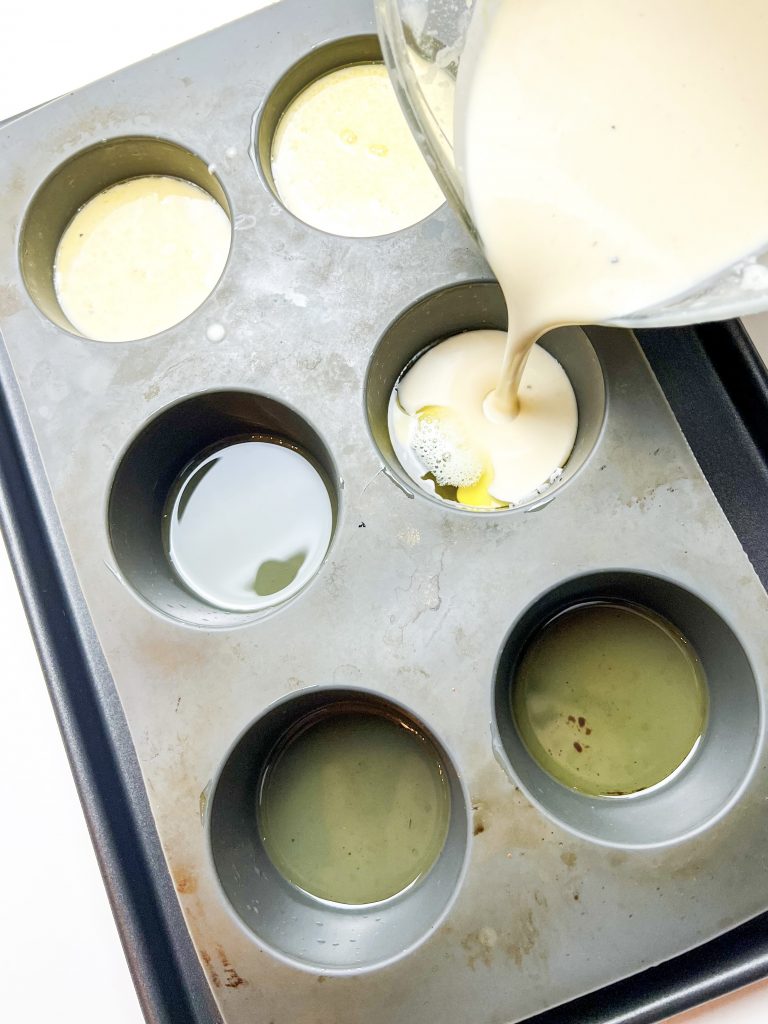
6 Pour batter equally … 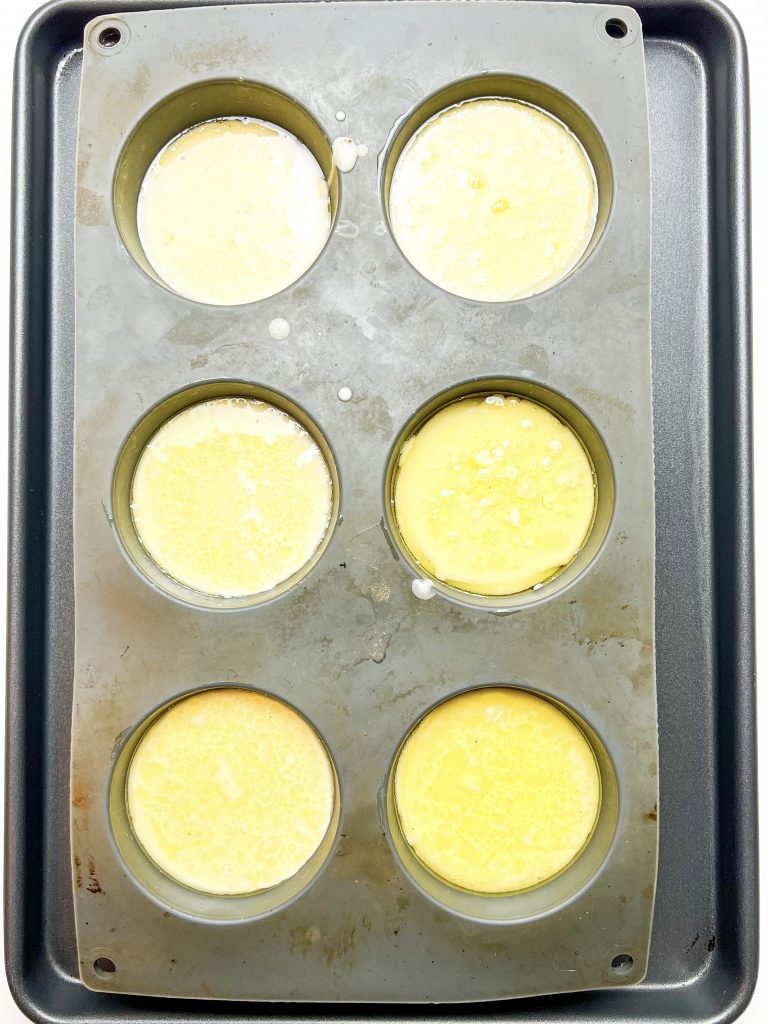
… into the hot oil 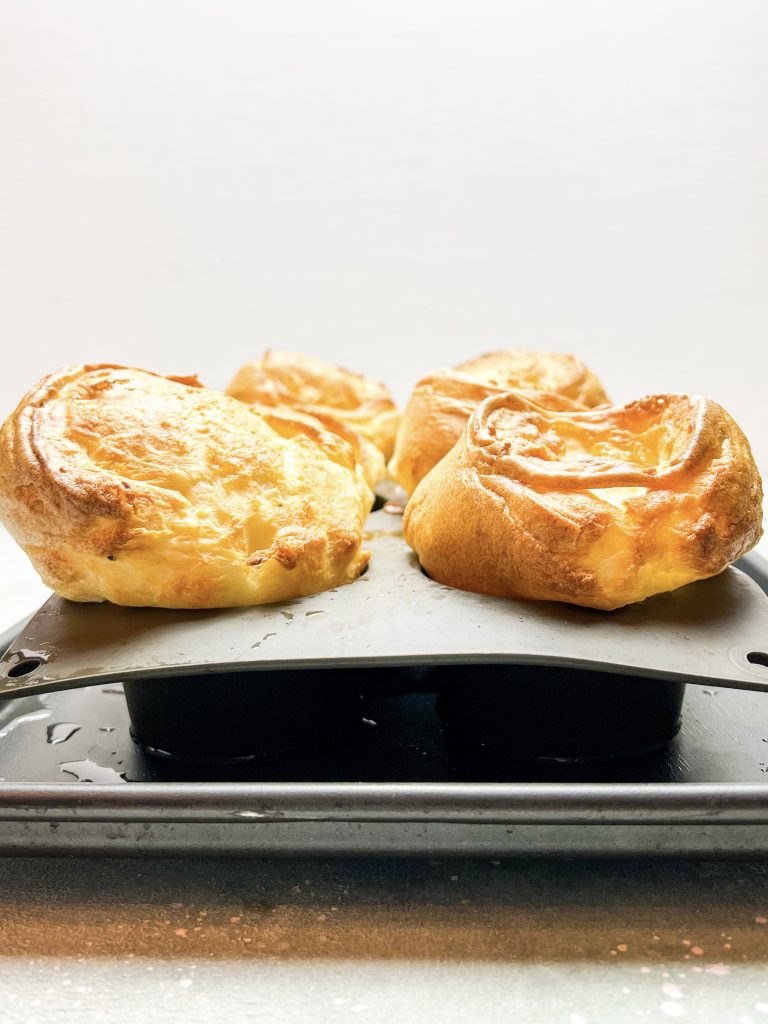
7 Cook 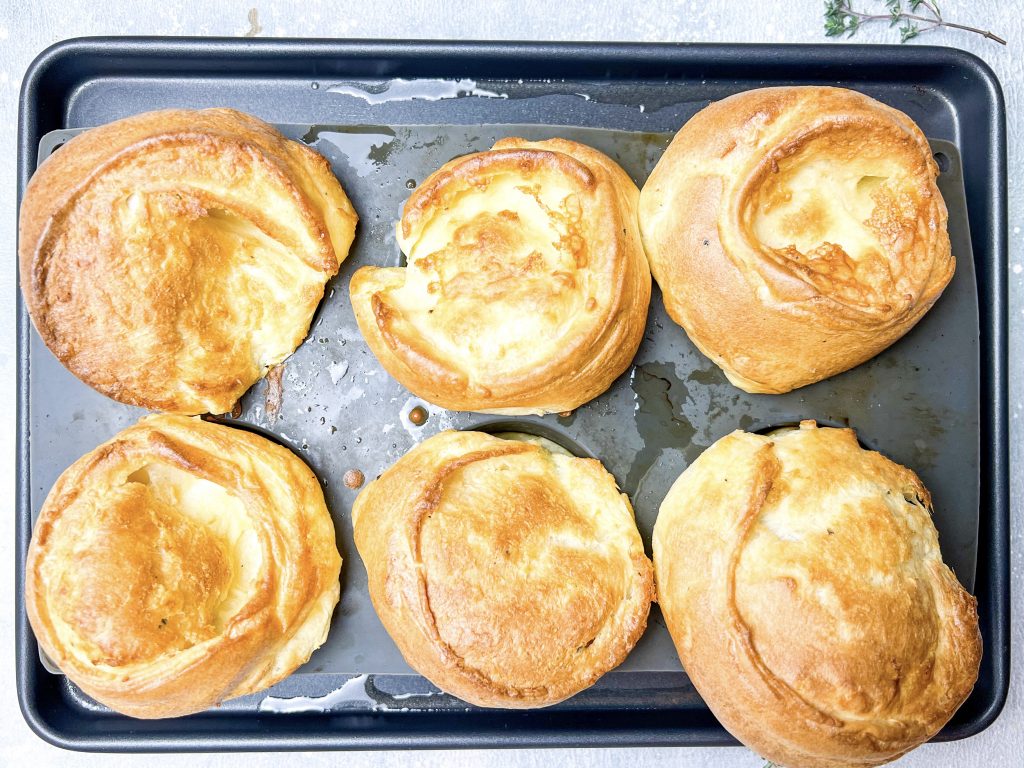
Top Tips
Make ahead tips:
- You can make the batter a few hours in advance – store it in a jug, covered and in the fridge, ready to pour into the tin when you are ready to cook them.
- Make and cook them in advance and pop into a preheated oven for around 8 minutes to re-heat.
- You can also make, cook and then freeze these wonderful Yorkshires. You can pop frozen Yorkshires into a preheated oven for around 10 minutes to re-heat.
Lyngen Lodge
Last April, we were lucky enough to be included in Chris Mathias’ 60th birthday celebration at Lyngen Lodge in Norway. Every breakfast and afternoon tea included incredible grazing boards. This is a fabulous recipe which I love to include on Grazing Boards and have therefore included it in my collection of recipes to celebrate the wonderful food we enjoyed there.
Made this recipe?
If you make this recipe, do please tag me on instagram @daffodil_kitchen. You could also leave a comment in the box directly below the recipe.
Yorkshire Pudding
Hugely popular throughout the UK, Yorkshire Pudding is made from cooking a simple batter of eggs,, flour, butter and milk in a very hot oven until it is puffed up, crispy on the outside yet wonderfully soft in the centre.
Ingredients
To cook –
- 9 teaspoons melted goose fat, duck fat, lard, dripping or oil such as vegetable oil or you can use olive oil
For the batter –
- 130g plain/all-purpose flour
- ¼ teaspoon fine salt
- ¼ teaspoon freshly ground black pepper
- 2 eggs
- 30g/2 tablespoons unsalted butter, melted or vegetable oil
- 50ml water
- 200ml milk – I use semi-skimmed
Instructions
-
Collect together your equipment (see Recipe Notes below) and ingredients.
-
Preheat your oven to Fan oven 200°C/220°C/425°F/Gas Mark 7.
-
Prepare the tin/s. Add 1½ teaspoons of your chosen fat to each muffin hole or the whole quantity to your baking dish. Use a pastry brush to ensure the base and sides of the tin are covered in the fat/oil. (See Recipe Notes for tin sizes.)
-
Put the dish into the pre-heated oven to heat up for at least 5 minutes.
-
Add the flour, salt, pepper, eggs, melted butter and water to a bowl or jug and beat with an electric or a balloon whisk until mixed.
-
Scrape down the sides of the bowl, add the milk and beat on a slow speed until thoroughly incorporated. It should the consistency of double/heavy cream.
-
Pour the batter equally into the hot oil – I make one large or six large individual Yorkshires but you may prefer to make 8 slightly smaller individual ones.
-
Place in the centre of a very hot oven and bake for 20 – 25 minutes for the individual ones or 30 – 40 minutes for a larger Yorkshire.
-
They are cooked when the batter has puffed up, the outside is crispy and the inside is soft.
-
Serve immediately – they will deflate quickly so get them on the table as soon as possible.
-
Delicious with roast dinners, sausages with onion gravy and use the recipe for Toad in the Hole. Also works really well with fish pâté!
Recipe Notes
Equipment:
- tins (see below)
- kitchen scales and measuring spoons
- mixing bowl
- electric or balloon whisk
Tins:
- you can make individual Yorkshires in deep muffin tins, ( I use my silicone muffin tray but metal tins work really well too, OR
- you can make a large one in a baking dish or cast iron pan. You can use:
- an oblong tin roughly 20cms/8in x 26cms/10¼in,
- a square tin 23cms/9in x 23cms/9in, or
- a round tin 25cms/10in in diameter.

Speculaas
You May Also Like
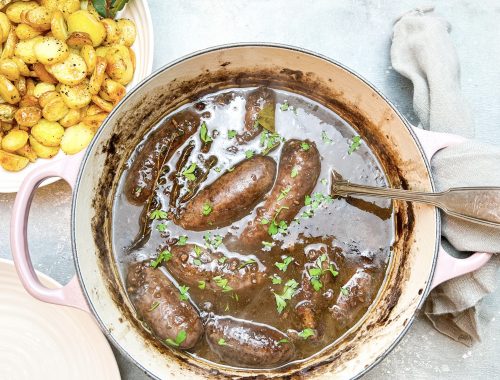
Venison Sausage Casserole with Red Wine, Juniper Berries, Redcurrant Jelly and Fresh Thyme
7th January 2022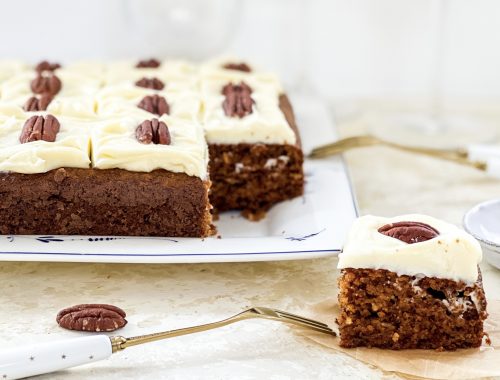
Loaded Carrot Cake Slice with a Silky Cream Cheese Topping
5th July 2022